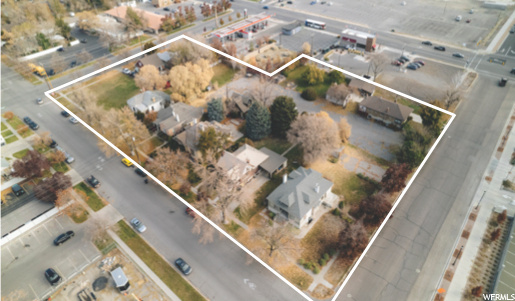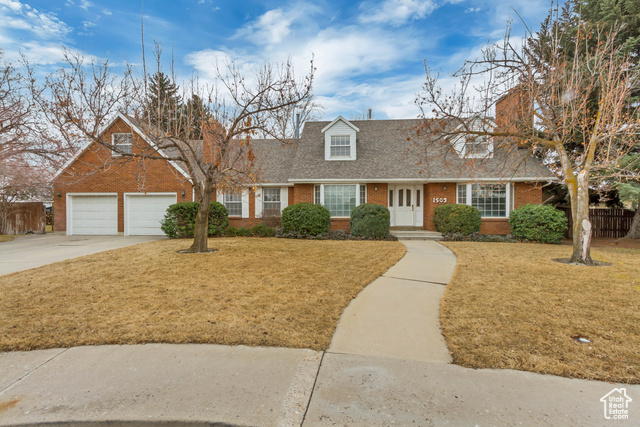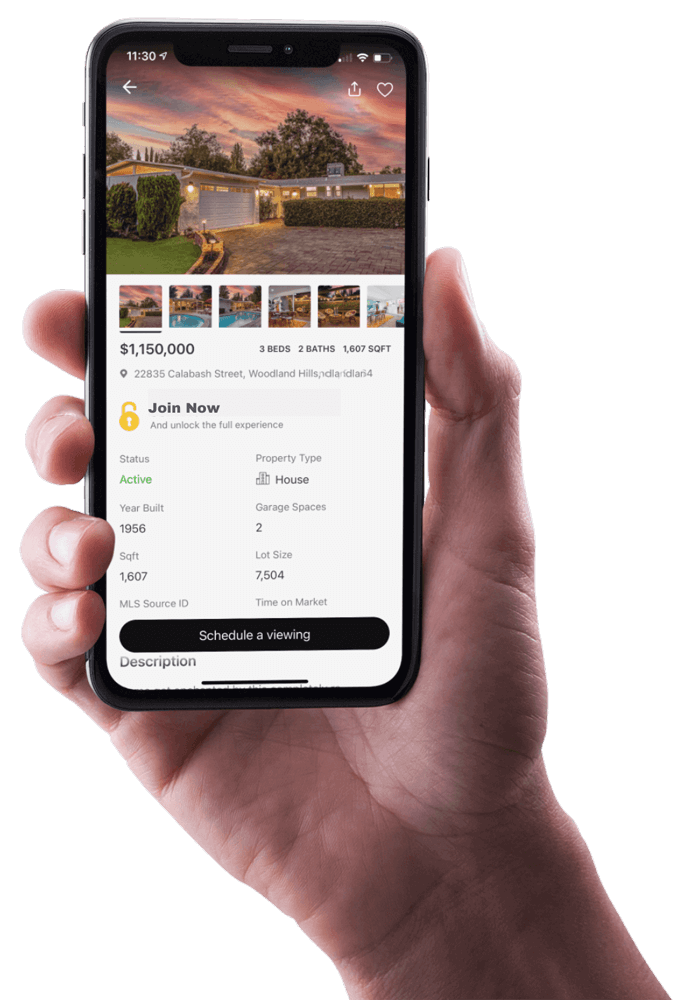

Zillow provided their new housing market update for 2023. In fact, this is the first time ever they provide the real estate market predictions for the entire year of 2023.
They first talk about the Midwest. During the early parts of this pandemic, the Sun Belt in the US had a strong pull on American movers. A lot of people moved to the Sun Belt during the early parts of this pandemic back in 2020, and of course 2021. The housing markets in Florida dominated the annual price appreciation leaderboard in 2022. That was followed by Tennessee, the Carolinas, as well as Texas as well.
In Zillow's forecasting, the heat will stay on in the Sunshine State. In other words, they are forecasting that the housing market will still remain fairly hot in Florida in 2023. However, though, affordability has become the key driver of both supply and demand in the marketplace here, and places that still feature reasonable prices are already seeing momentum shifting their way. And those markets should have the healthiest markets in 2023.
In regards to demand shifting towards more reasonably priced markets, they're basically right on par with what Redfin's reporting as well because they reported a few days ago that nearly one quarter or 24.1% of US home buyers who are going onto Redfin looking for houses for sale looked to move to a different metro area in the three months ended in October. That's on par with the all-time record high of 24.2% that was set in the third quarter of this year.On top of that, this 24.1% of US home buyers looking for houses for sale in a different Metro area, that's up from the roughly 18% that was seen in 2019.
And speaking of home buyers looking to move to more affordable areas here, Redfin says that home buyers are looking to move to Sun Belt, especially Florida. Sacramento, Las Vegas and Miami were the most popular destinations for redfin.com users looking to relocate, and those follow by San Diego as well as Tampa. On top of that, half of the top 10 migration destinations are in Florida. Cape Coral, Florida, North Port, Sarasota, as well as Orlando on the list, followed by Miami and Tampa as well. It says they're relatively affordable Sun Belt metros are typically most popular with relocating home buyers, largely because buyers can get more home for less money.
In Las Vegas, for example, the typical home cost $410,000 in October 2022, roughly half the price of the typical home in Los Angeles, which is $823,000. And based on this analysis from Redfin here, Sacramento was actually the number one destination city in the United States. And the top origin of people moving out of this area into Sacramento was actually San Francisco, which obviously has home prices around 1.6 million is the average home price, whereas in Sacramento it's around 500 to $600,000. Followed by Sacramento was Las Vegas, Nevada, and the top origin there was Los Angeles, California, and then Miami, Florida running out the top three in the top origin there is coming from New York, New York. In contrast, the top three Metros of people looking to move out of that area was actually in San Francisco, followed by Los Angeles, as well as New York, New York. So it appears that based on people looking for house for sale, it appears a lot of people are looking for more affordable areas and moving out of more expensive areas.
And going back to Zillow's housing market forecast here, it says, "Enter the Midwest." Unlike every other region in the United States or nearly every other region in the US prices in most Midwest Metro areas haven't run up in prices as much of these other areas. Mortgage costs as a share of income are still within a healthy range here, sub 30% levels across Ohio, Pennsylvania, Kansas, upstate New York, Iowa, and smaller metros in Illinois, which allow first time home buyers to take the plunge in home buying.
Zillow is also predicting that more home buyers are going to be buying houses with family and friends due to a lack of housing affordability. They say here with rising housing costs or with housing costs rising far above previous affordable norms, those chasing down home ownership are turning to unconventional means of making it pencil out financially, and this should continue or could continue in 2023.
In fact, based on a survey done this spring, Zillow found out that among successful recent home buyers, in other words, people who had just purchased a house this spring, approximately 18% had purchased along with a friend or relative who wasn't their spouse or partner, and affordability, and of course qualifying for a mortgage, were cited as the top reasons for buying together, challenges that are now even more acute right now because of course back in the spring months, rates are around 5%. Now, of course, rates are around six to 7% right now.
Zillow is also predicting that housing affordability will stabilize, if not improve, in 2023. It says your affordability, which of course is a measure of the meeting income required to pay housing costs, the debt balance between income and your housing payment here, is the biggest challenge for buyers, sellers, and renters today. Monthly mortgage cuts have doubled since 2019, driven by on price hikes and of course rapid increases in rates.
In regards to their statement here that monthly housing costs have doubled since 2019, I actually want to give you guys an example because I tend to share examples regarding what your average monthly housing payment would be one month ago versus today, but I actually have never looked at 2019's home prices compared to now, and looking at different rates back then compared to now. So here you go. Here's an example looking at how much your housing payment would be in the early parts of December of 2019 versus now. So the median sold price back in early December 2019 was approximately $270,000. So let's assume you're putting down 20% down, your loan amount would be $216,000. And your rate back in December, early parts of December 2019, was approximately 3.8%. In this example, I'm actually including insurance and taxes as well because there's a big difference between home prices here when talking about home prices over the span of three years, and therefore your taxes are about a thousand dollars more expensive for the year compared to right now because increases of home prices here.
So in this example here, I'm assuming that home insurance is around $100 per month. Of course, that widely varies depending on where you're living here, but I'm assuming $100 per month. I'm also assuming a tax rate of 1.25% based on your purchase price, which in this example is 270,000. In California, for example, average property taxes around 1.25%. Of course, I realize in other markets, like Texas and Illinois for example, property taxes are much more expensive that, but in this example, I'm just going to provide analysis based on rates at 1.25%. So taking that all in consideration, based on all this, your housing payment would be approximately $1,387 per month back in early December 2019.
So fast forward today, have a look at this. The median sold price as of today is approximately 357,000. That's as of the end of November according to Redfin. And also assuming 20% down payment, the new rate at 6.34% which is the 2nd of December 2022.. And of course assuming home insurance about $100 per month as well. You don't see a whole lot of increases in home insurance, of course, it depends on where you live, of course, right? Also, assuming a property taxes at 1.25% based on a home purchase price of $357,000. That would give you an average monthly housing payment of $2,247 per month or an increase of $859 more per month to buy an average price home today in 2019. And that increase of $859 more per month to buy an average price home today versus three years ago is a 61% increase.
So going back to Zillow's report here saying that average monthly housing costs have doubled since 2019, I think it depends on what rate you're using using, of course what home prices you're using as well, and of course property tax rates as well as home insurance. But on my example, up by 61% over the past three years, since 2019. And by the way, if I was to use rates back at 7.3% that we saw about a month ago, that difference in housing payment would be about $1000. In any case, hope you guys appreciate that example there regarding your average monthly housing payment right now versus 2019.
Zillow also stated that these high mortgage rates are not only pushing buyers to the sidelines, they're taking new inventory or new listings as homeowners decide to hang onto their current houses and low rates. And renters are not exempt from this madness as well. Rents have grown faster than wages, making it harder to save for a down payment. And the average hourly wage has grown 23% over the past five years, but rents have gone up 37% during that same time period after the pandemic era surge in rents.
And Zillow says housing affordability will continue to be a driving force in the housing market in 2023, but there's a decent chance it will improve, and at the very least the market should stabilize according to Zillow. In regards to home prices, here's what Zillow had to say for 2023, which by the way is the first time I've seen them predict the home prices are going to be flat next year. Zillow expects national home values to remain relatively flat next year and even fall in the most affordability challenge markets. Again, this is the first time I've seen Zillow actually predict that home values are going to be flat next year, and also predicting that some markets are going to actually have decreases in home prices next year. And in fact, Redfin has already stated that there's approximately 10 markets in the US who have already experienced decreases in home prices compared to one year ago. And those markets are the following here.
Prices have fallen by 8.2% on a year of year basis in San Francisco, California. That was followed by San Jose, California, Pittsburgh, Detroit, Sacramento, Austin, Texas, as well as Chicago, San Diego, Los Angeles, and Philadelphia. Again, all 10 of these markets had home prices decreased compared to one year ago. And Zillow says here that mortgage rates are already seeing some recent and encouraging progress downwards as inflation and labor market tightness show small signs of easing. And this may be enough to suggest that some may believe that the Federal Reserve may ease its aggressive monetary contraction.
Related Articles:
- Exploring Utahs Unexpected Crime Hotspots
- Understanding Short Sales And Foreclosures In The Greater Salt Lake Area
- Exploring St George Utah Alternative To Sedona
- Zillow Downgrades Housing Market May 2022
- Unlocking Retirement How Many Rental Properties Do You Really Need
- Navigating The Shifting Landscape Of The Us Housing Market
- Navigating Utahs Housing Market Insights And Predictions October 2024
- Modern Outdoor Lighting Types That Can Boost Your Homes Value
- Unlocking Opportunities In Utahs New Construction Real Estate Market
- Seller Financing Homes Utah
- Heber Utah Vs Park City Utah
- 2025 Utah Housing Market Forecast Will Prices Crash Or Recover








